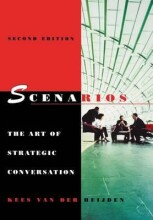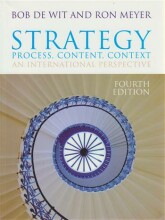Summary: Understanding The Basic Dynamics Of Organizing / Druk Heruitgave | 9789059726864 | Peter Peverelli
- This + 400k other summaries
- A unique study and practice tool
- Never study anything twice again
- Get the grades you hope for
- 100% sure, 100% understanding
Read the summary and the most important questions on Understanding the basic dynamics of organizing / druk Heruitgave | 9789059726864 | Peter Peverelli
-
1 Introduction + basis aspects of organizing
This is a preview. There are 43 more flashcards available for chapter 1
Show more cards here -
Wat is organization theory?
Een basis studie die de manieren onderzoekt waarop menselijke actroren zichzelf in groepen organiseren met verschillende graden van complexiteit.
It is one approach to understanding organizational dynamics.
-
Hoofddorp, what steps/aspects can you distinguish in this process?
1 Chaos (individuals/small groups, mutually disconnected)
2 Some people start talking to others: some of them make sense to others. This can lead to a group of people with a shared belief.
3 The main theme of each groups affects the group behaviour. -
When you are in a group, you will become aware of the existence of other groups with conflicting themes. What does this group membership produces?
A social identity, a belief about 'what are we and what are we not'. What are we = group cohesion. What are we not results in groups creating psysical distance from one another. -
Why organization theory?
Organizing is what people do, it is the basic process governing each and every aspect of human society. One cannot organize. In order to manage, man has to cope with organizing processes. The better we understand the processes of human organizing, the better we can manage our organizations.
-
Describe thr 4 doublr interacts construct relations:
Act Interact Double interact Type of influence
A A A Uniformity
A A B Anticonformity
A B A Independence
A B B Conformity -
Volgens Weick kent sensemaking 7 aspecten. What is sensemaking 1: grounded in identity construction?
Actors develop ideas about their role in a situation vis a vis others. This perceived role decides activities.
Perceived role + linked activities = identity
Groups of actors (e.g. organizations) also construct identities. (For ex. I'm glad we take the train back)(Sensemaking is de uitwisseling van percepties door sociale interactie. Actoren ontwikkelen geleidelijk hun rol in de situatie t.o.v. anderen. Deze rol is beslissend voor de acties dies een actor zal ondernemen. De waargenomen rol + gelinkte activiteiten = identiteit.
-
Volgens Weick kent sensemaking 7 aspecten. What is sensemaking 2: retrospective?
Actors act in ways that have proven successful in the past. Actors acts in the way 'we always do things' (construction rules).
In case of a (perceived) change in the environment, actors need more effort to make sense of the new environment. Even then they will scan past experience for solutions. (For ex. in situations likes this the NS will always provide a bus) -
Volgens Weick kent sensemaking 7 aspecten. What is sensemaking 4: a social process?
Sensemaking is a social process. It requires a minimal social situation. Human thinking and social functioning are reliant on social relations, which are a result of social interaction.
-
Volgens Weick kent sensemaking 7 aspecten. What is sensemaking 5: ongoing process?
Organizing = sensemaking (= interacting)
One cannot organize (make sense, interact, behave, communicate). Sensemaking never starts or stops, it is an ongoing process. -
Volgens Weick kent sensemaking 7 aspecten. What is sensemaking 6: focused on and by extracted cues?
Actors are confrontated with more information than they can cope with. Actors only notice a limited number of cues. Actors construct their view on reality from these cues. Chunks of information streams are combined by punctuation (leestekens?) or bracketing (reeksopnames?).
This reduction of equivocality is funtional (actors are unable to act without it) and simultaneously dysfunctional (it will easily discards useable ideas as 'untrue', 'inefficient' etc.)
- Higher grades + faster learning
- Never study anything twice
- 100% sure, 100% understanding
































